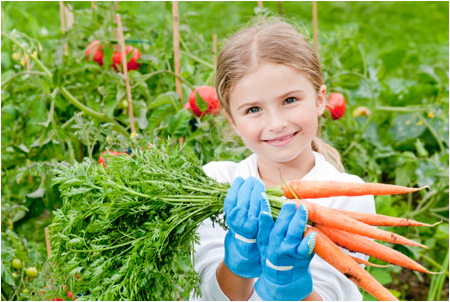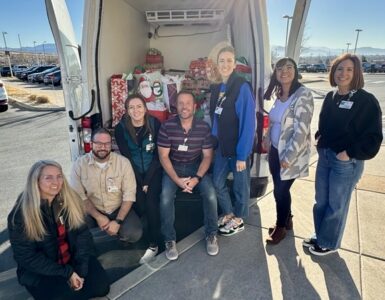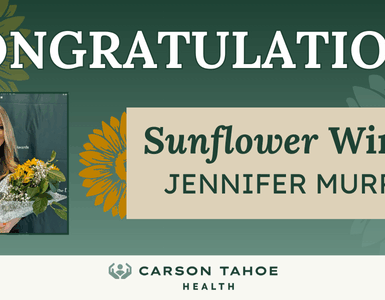Physical activity and mental stimulation can be found as close as your own backyard. Think you can’t grow a garden in Northern Nevada, given our dry climate? Think again! Kim Mason, a registered dietician at Carson Tahoe Health, explains the following easier-than-you-might-think options to grow a garden that lasts all year long!
Option 1 – Grow a “Container Garden”
You don’t need a plot of land to grow fresh vegetables. Many vegetables lend themselves well to container gardening. With some thought to selecting bush or dwarf varieties, almost any vegetable can be adapted to growing in a pot. even if you want your favorite full-size variety, if you give it a large enough pot and plenty of soil and water, it will grow just fine and reward you with plenty. Vegetables that take up little space, such as carrots, radishes, and lettuce, or crops that bear fruits over a long period of time, such as tomatoes and peppers, are perfect for container vegetable gardens.
What you can grow in a container vegetable garden is limited only by the size of the container and your imagination. How about a Summer Salad container? Plant a tomato, a cucumber, and some parsley or chives all in a large (24-30″) container. They grow well together and have the same water and sun requirements. By late summer they might not be very pretty, but they’ll keep producing into the fall.
Since your vegetable plants will be making their containers home for the season, you want to start them off right. Make sure there is enough space for them to grow into and choose your soil and site with care. Here is advice for getting set up and started, followed by container growing tips for specific vegetables.
Selecting Containers
Containers for your vegetable gardens can be almost anything: flower pots, pails, buckets, wire baskets, bushel baskets, wooden boxes, nursery flats, window planters, washtubs, strawberry pots, plastic bags, large food cans, or any number of other things.
• Drainage: No matter what kind of container you choose for your vegetable garden, it should have holes at the base or in the bottom to permit drainage of excess water.
• Color Considerations: You should be careful when using dark-colored containers because they absorb heat which could possibly damage the plant roots. If you do use dark-colored pots, try painting them a lighter color or shading just the container, not the plants.
• Size: The size of the container is important. For larger vegetables like tomatoes and eggplants, you should use a five-gallon container for each plant. You can grow these plants in two-gallon containers, however, you need to give the plants considerably more water.
Soil and Fertilizer
You can use soil in your container vegetable garden, but potting mixes are much better. Peat-based mixes, containing peat and vermiculite, are excellent. They are relatively sterile and pH adjusted. They also allow the plants to get enough air and water. Mixing in one part compost to two parts planting mix will improve fertility.
Using a slow-release or complete organic fertilizer at planting will keep your vegetables fed for the whole growing season.
Watering
Pots and containers always require more frequent watering than plants in the ground. As the season progresses and your plants mature, their root system will expand and require even more water. Don’t wait until you see the plants wilting. Check your containers daily to judge the need for water.
Wind
Wind can be a real hazard for any container-grown plant and tall vegetables, like tomatoes or trellised cucumber and squash, become top-heavy as they produce fruits. Try to place your containers so that they are not in an overly windy location. A breeze will provide nice air circulation and help prevent fungal diseases, but a strong wind can topple plants and containers and can also shred leaves and dislodge fruits. If you are gardening on a raised deck or a rooftop, it may be necessary to provide some type of wind block.
Option 2 – Use a “Hoop House”
A hoop house is an inexpensive greenhouse using a plastic roof over bent metal or PVC tubing. They’re really helpful for growing a garden in Northern Nevada, offering a controlled environment that can provide frost protection, wind protection, humidity control, and insect control. So, it actually extends your growing season!
You can either build your own hoop house, or you can buy one. To download a list of hoop house types and prices, click here.
To learn how to build your own hoop house out of PVC, click here.
Option 3 – Use a Greenhouse
Greenhouses tend to be the most expensive option and is similar in many ways to gardening outside. The plants still need adequate nutrients and water, and protection from insect pests and diseases. You still must tie, prune, and tend to them.
But the greenhouse environment is also very different from that of a backyard garden. The very things that make greenhouse growing more controlled and convenient also make it more demanding. In a greenhouse, you control temperature, humidity, soil aeration, soil moisture and drainage, fertility levels, and light. This degree of environmental control gives you a tremendous amount of latitude as well as some new responsibilities.
What’s growing in your garden and do you have any tips for the Northern Nevada climate? Let us know in the comments below!







